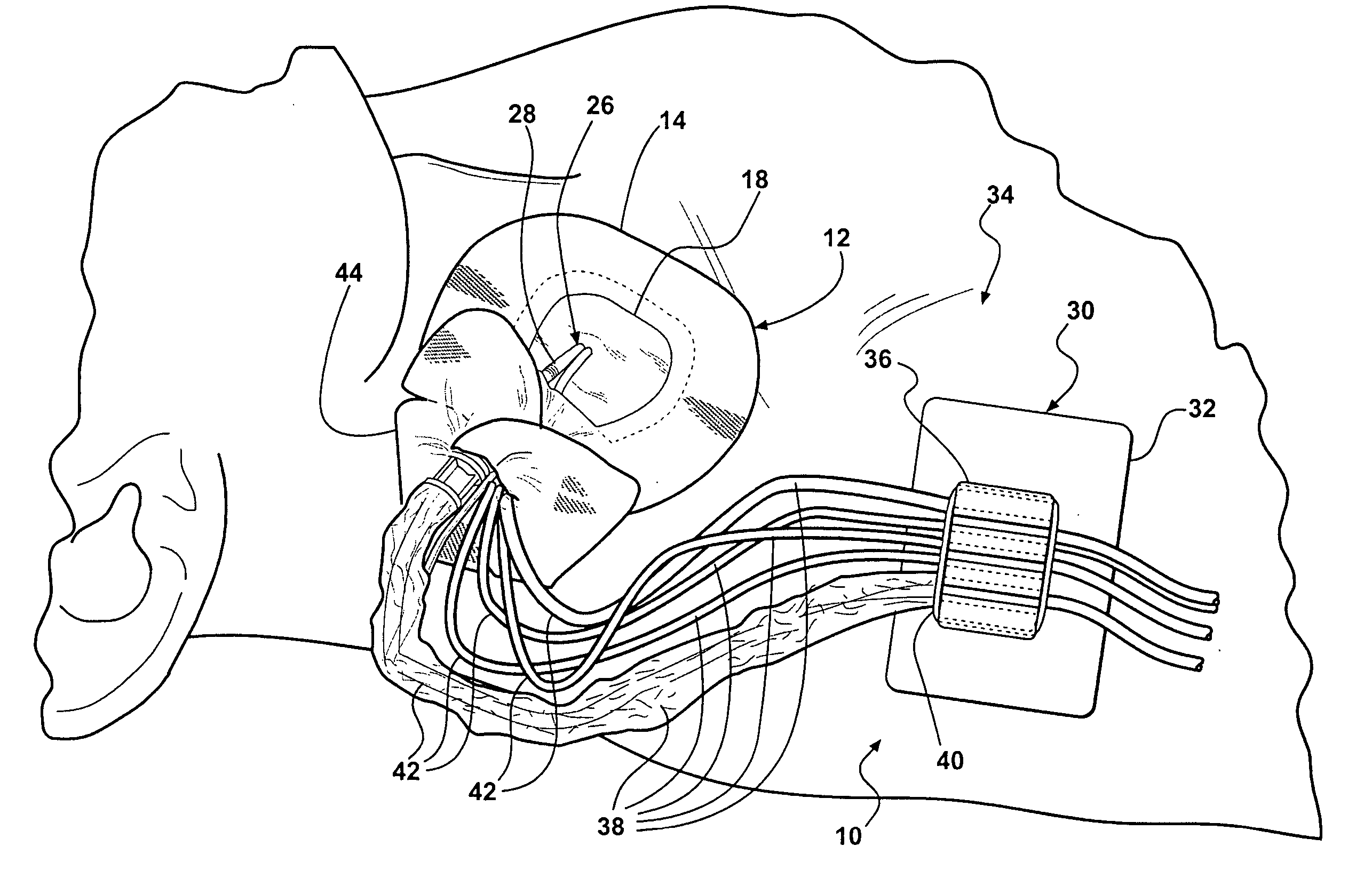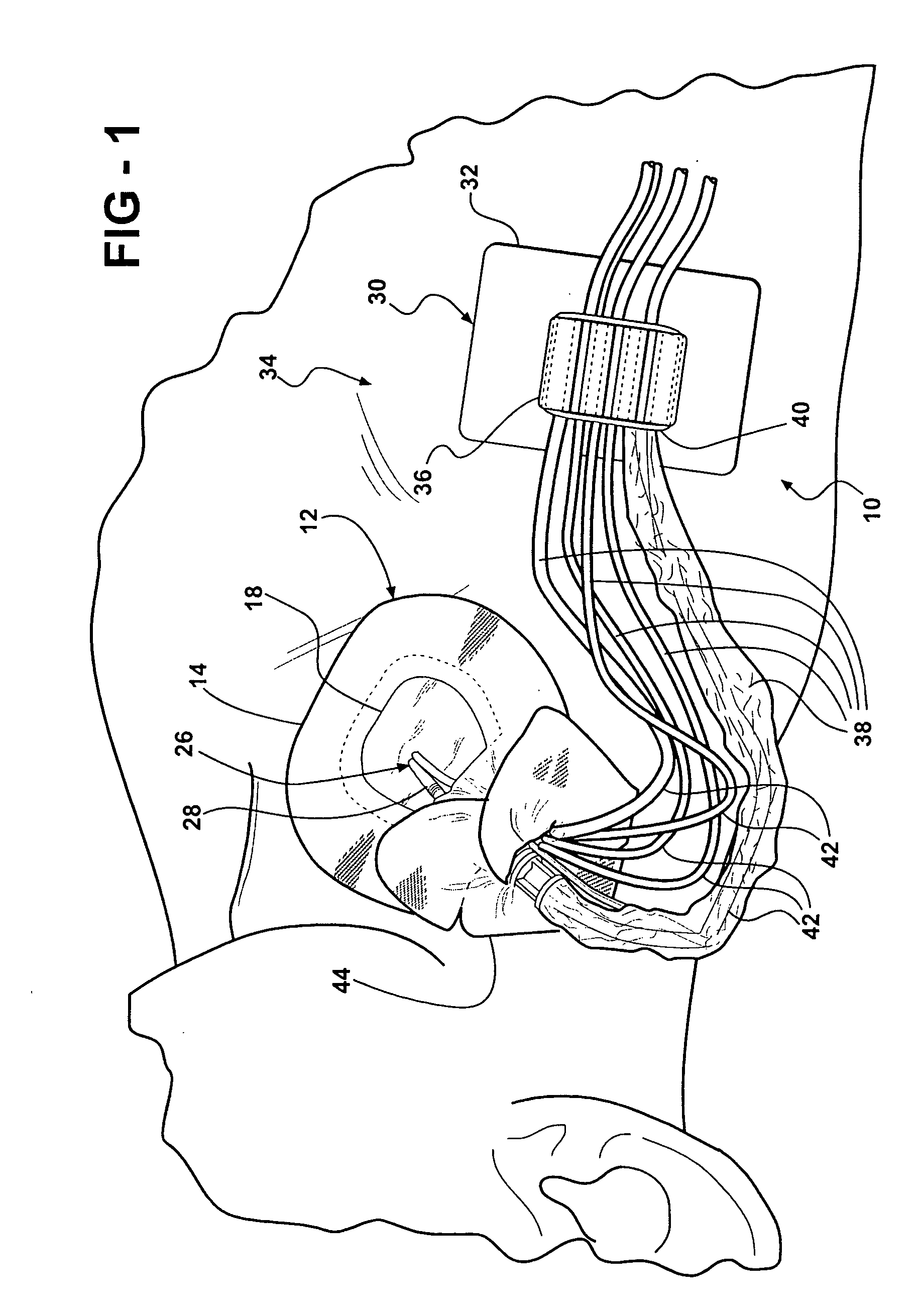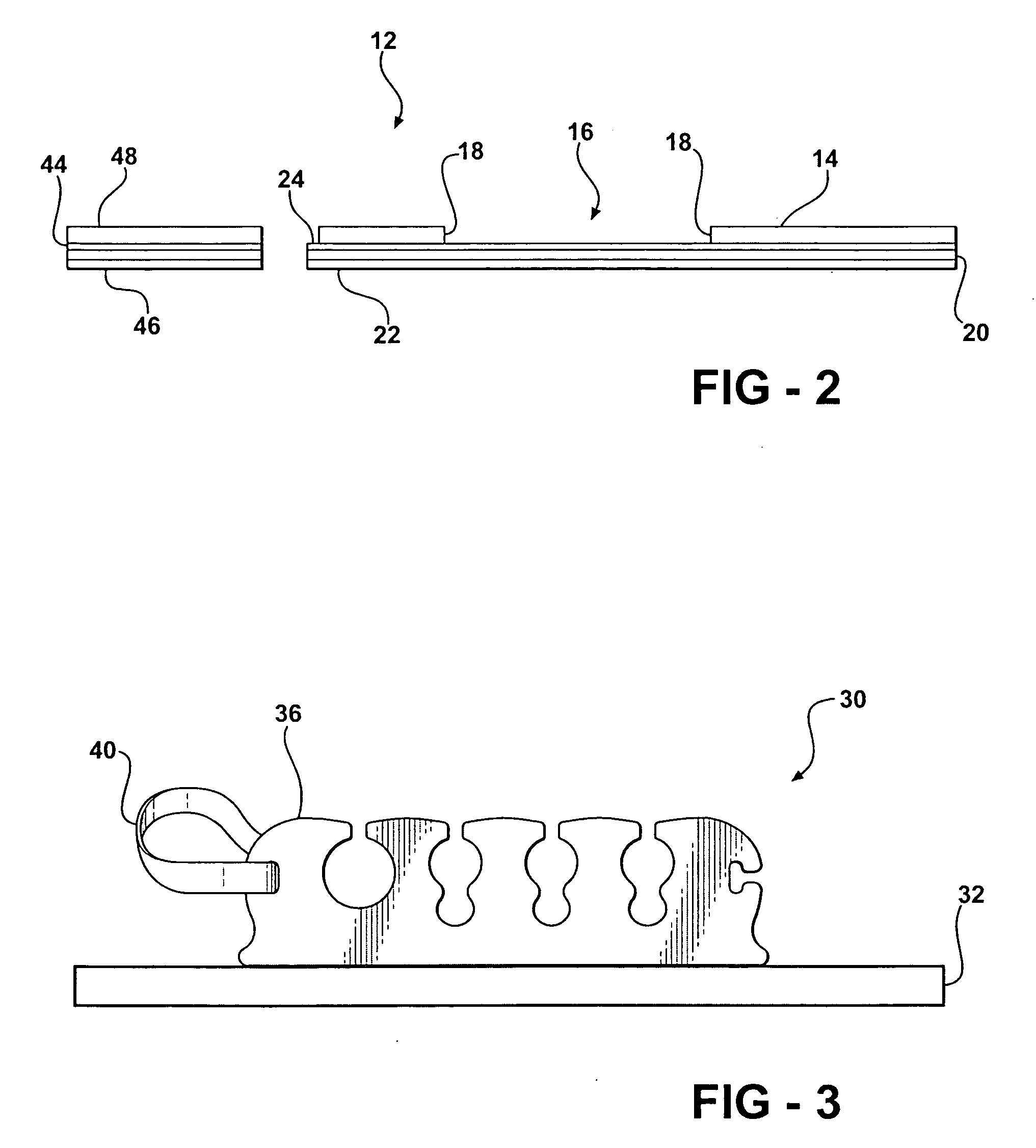Jugular and subclavian access site dressing, anchoring system and method
- Summary
- Abstract
- Description
- Claims
- Application Information
AI Technical Summary
Benefits of technology
Problems solved by technology
Method used
Image
Examples
Embodiment Construction
[0022] Referring now to the drawings in detail, numeral 10 generally indicates a system adapted to tend a jugular or subclavian catheter and connecting tubing that prevents inadvertent release of catheter(s) and dressing from a patient's body. The system can accommodate various sizes and combinations of connecting / medical tubing utilized at a jugular or subclavian access site, such as an introducer sheath with a side arm, an introducer sheath with a side arm in combination with a pulmonary artery catheter, and either a single, double, or triple lumen central venous catheter. Moreover, the system can be utilized on either a right-hand side or a left-hand side access site and the system eliminates the forces that cause the dressing to tear away from the skin around the access site.
[0023] As shown in FIGS. 1 through 3, a preferred system adapted to tend a jugular or subclavian catheter and connecting tubing 10 includes a window dressing 12 of the type including a layer member 14 havin...
PUM
 Login to View More
Login to View More Abstract
Description
Claims
Application Information
 Login to View More
Login to View More - R&D
- Intellectual Property
- Life Sciences
- Materials
- Tech Scout
- Unparalleled Data Quality
- Higher Quality Content
- 60% Fewer Hallucinations
Browse by: Latest US Patents, China's latest patents, Technical Efficacy Thesaurus, Application Domain, Technology Topic, Popular Technical Reports.
© 2025 PatSnap. All rights reserved.Legal|Privacy policy|Modern Slavery Act Transparency Statement|Sitemap|About US| Contact US: help@patsnap.com



